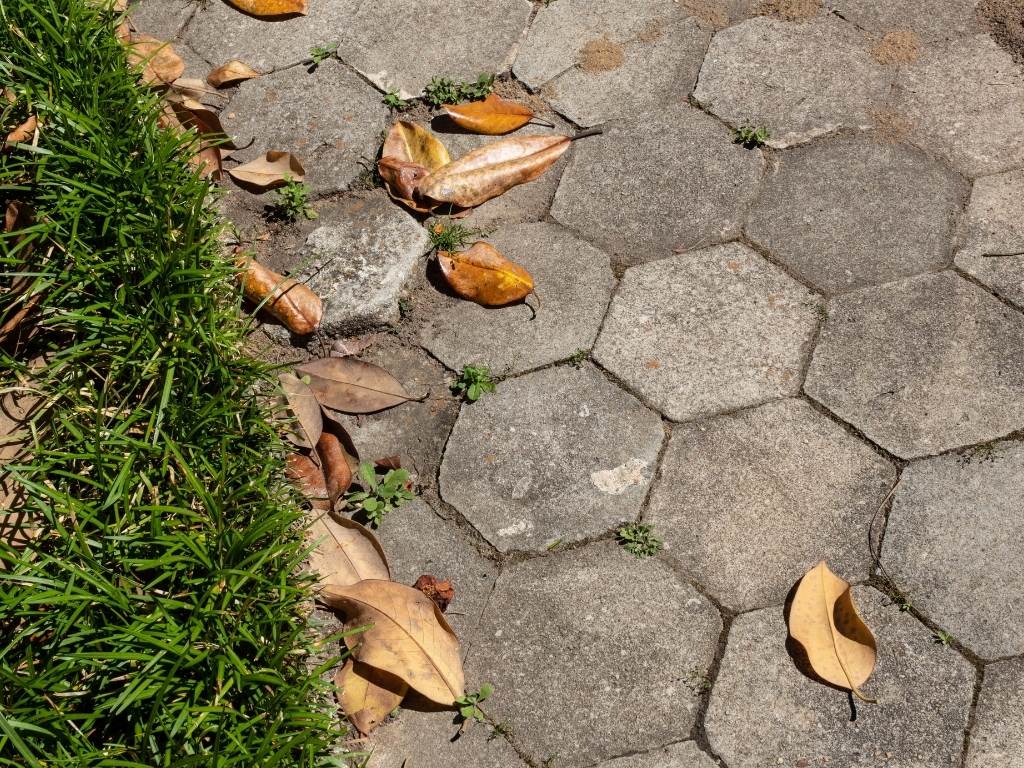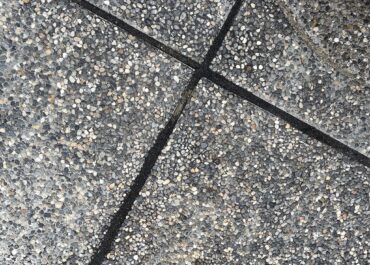
Paving stones are a popular choice for outdoor spaces such as patios, fire pits, and driveways because of their durability, variety of designs and colors, and low-maintenance properties. Unfortunately, one of the downsides of pavers – porous ones in particular – is that they can easily get stained, requiring a cleanup routine to keep them looking bright. On this matter, leaf stains on pavers are a common problem, culminating in unappealing visuals around your house if not taken care of.
As we’ll teach you in this article, though, there are simple methods to remove leaf stains from your paving stones. Keep reading to find out which ones!
Don’t miss: Pavers Restoration – The Complete Guide
How to Remove Leaf Stains on Pavers
Leaf stains on pavers are a common problem for many homeowners – and that’s no surprise. Considering how often neighborhoods adorn themselves with greenery, many sidewalks and front doors are resting places for falling leaves (and ant infestations too, an issue you can learn to solve here). This recurrence can leave behind tannins, which may cause brown or yellow stains on the pavers when exposed to the sun long enough. As mentioned, the stains are not only unsightly but can also damage the pavers over time if left untreated.
With that said, removing leaf stains from pavers is not a difficult task by any means, but it does require some effort and the right tools. In the following section, we will discuss three effective ways to remove leaf stains from pavers.

Method 1: Using a Pressure Washer
A pressure washer is an effective tool for removing leaf stains from pavers – but you must use it with care to avoid damaging their surface or sand base. Therefore, like anything in the hardscape business, consult an expert if this is your first time using the equipment alone.
So, let’s get right into it.
Start by sweeping the pavers to remove any loose debris. Then, using a pressure washer, spray the stained areas with water. Adjust the pressure according to the severity of the stains. (If the stains are not too severe, a low-pressure setting should suffice. For stubborn stains, you may need to use a higher-pressure setting.)
Once you have sprayed the stained areas with water, apply a cleaning product to the stains. You can use a commercial paver cleaner or make a cleaning solution of your own by mixing equal parts of water and white vinegar. Let the cleaning solution sit on the stains for 10-15 minutes, then rinse the pavers with water using the pressure washer.
Method 2: Using a Stain Remover
Of course, another effective way to remove leaf stains from pavers is by using a stain remover. There are many stain removers available at your nearest construction store that are specifically designed for pavers – and it’s important to follow the instructions on the label for the best results.
Before using the stain remover, though, start by sweeping the pavers to remove loose debris. Then, apply the stain remover to the stained areas and let it sit for the recommended time. Most stain removers require you to scrub the stained areas with a brush before rinsing the pavers with water.
Method 3: Using a Mixture of Baking Soda and Water
Baking soda is a natural cleaning agent that can be used to remove leaf stains from pavers. Mix equal parts of baking soda and water to create a paste. Apply the paste to the stained areas and let it sit for 15-20 minutes. Finally, scrub the stained areas with a brush and rinse the pavers with water.
How to Prevent Such a Problem
Prevention is always better than cure. To prevent leaf stains from forming on your pavers, consider the following tips:
- Sweep your pavers regularly to remove any leaves or debris;
- Trim any trees or plants that are overhanging your pavers to minimize the number of leaves falling on them;
- Consider installing a leaf guard or a mesh screen over your gutters to prevent leaves from falling on your pavers;
- Seal your pavers at least once a year to prevent liquid absorption and fading.
Benefits of Sealing Your Pavers
If you’re familiar with the business, you know that sealing your pavers can help prevent leaf stains from forming on them. A sealer is a barrier between the pavers and outside elements, which include leaves, and it’s a must when it comes to porous surfaces such as concrete and brick.
Sealing your pavers also provides the following benefits:
- Protects against UV rays: Sealing your pavers can protect them from the harmful effects of UV rays, which can cause fading and discoloration.
- Prevents weed growth: Sealing your pavers can also help prevent weed growth between the joints. This is because the sealer fills in the gaps between the pavers, making it difficult for weeds to take root.
- Easier maintenance: Sealed pavers are easier to clean and maintain. They are less prone to staining and require less frequent cleaning.
- Enhanced durability: Sealing your pavers can also enhance their durability. A sealer can help prevent the pavers from cracking, chipping, or crumbling over time.

Eagle Pavers can give you a hand!
Leaf stains on pavers can be a nuisance, but they are not difficult to remove. However, as much as a pressure washer, a stain remover, or a mixture of baking soda and water can effectively remove leaf stains from pavers, it’s always better to prevent the problem from occurring in the first place. And as you just read, cleaning and sealing your project regularly is key to prolonging the lifespan of your investment.
If you live in Sarasota, Florida, our staff is available to help you out.
A branch of Eagle Stones, we provide our clients with the best supply, installation, and maintenance services in town. Contact one of our agents today for a free quote!




